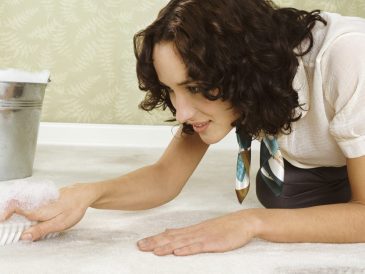Living in Miami offers many luxuries, from sun-drenched beaches to vibrant cultural scenes. However, Miami’s humid climate also presents challenges, particularly regarding mold growth in our homes and workplaces. Effective management of mold and its potential risks is crucial for maintaining a healthy indoor environment. This guide explores key aspects such as mold inspections and assessments, mold remediation, maintaining indoor air quality, managing biohazards and odors, and restoring environmental damage.
Understanding Mold Inspections and Assessments
Mold inspection is the first critical step in identifying potential mold infestations in your property. A thorough inspection involves examining areas prone to moisture accumulation as Miami’s humidity can contribute to unexpected mold growth even in well-maintained properties. Specialists use tools like moisture meters and infrared cameras to detect hidden moisture and mold that isn’t visible to the naked eye.
During an assessment, professionals determine the mold type and the infestation extent, crucial for devising an effective remediation plan. This step also helps homeowners understand the potential health risks and structural damage that unchecked mold growth may cause.
The Essentials of Mold Remediation
Once the assessment phase is complete, mold remediation becomes the focus. Remediation involves more than just removing visible mold; it addresses the root causes, such as moisture issues, to prevent recurrence. The process typically starts with containing the affected area to prevent mold spores from spreading to other parts of the building.
Specialized filtration equipment, such as HEPA vacuums and air scrubbers, is used to clean the air of mold spores. Infested materials, like drywall and insulation, are often removed and replaced, while non-porous surfaces are cleaned with antimicrobial agents to kill remaining mold. It’s important to seek professional help for effective remediation, ensuring that the mold issue is thoroughly addressed while preventing future growth.
Maintaining Indoor Air Quality

Indoor air quality is directly impacted by the presence of mold spores and other pollutants. Maintaining high air quality requires integrated approaches, including proper ventilation, regular HVAC system checks, and the use of air purifiers when necessary. Regularly replacing air filters and ensuring that your living or working space has adequate airflow can significantly reduce mold growth risks.
Biohazard Cleanup and Odor Removal
Mold often accompanies other biohazards, particularly in environments affected by water damage. Addressing these biohazards, including mold itself, is essential for restoring a safe living environment. Professional cleanup teams handle biohazardous materials according to strict safety protocols, ensuring that all biological and chemical contaminants are safely removed from the premises.
Odor removal is a critical component of this process. Mold and other biohazards can leave persistent odors that are not only unpleasant but also harmful to health. Specialists use various techniques, such as thermal fogging and ozone treatment, to neutralize these odors, effectively restoring the air quality of the indoor environment.
Environmental Damage Restoration
In the event of environmental damage, restoring your property to its original condition involves several comprehensive steps. This includes water extraction, drying, cleaning, and sanitizing affected areas, followed by structural repairs to any damaged building elements. Professionals skilled in environmental damage restoration can effectively bring your property back to a safe and welcoming state, while also implementing preventative measures against future incidents.
Navigating the complexities of mold and environmental damage in Miami requires awareness and action. Engaging with professionals for thorough inspections, remediation, and restoration can protect your health and investment. Remember, addressing mold growth promptly not only resolves immediate health concerns but also contributes to the long-term well-being of your indoor environments.
By staying informed and proactive, you can maintain a safe and healthy environment that stands strong against the challenges posed by Miami’s climate. Whether you’re dealing with a current mold issue or aiming to prevent future problems, understanding these key aspects will equip you to manage your indoor environment effectively.


